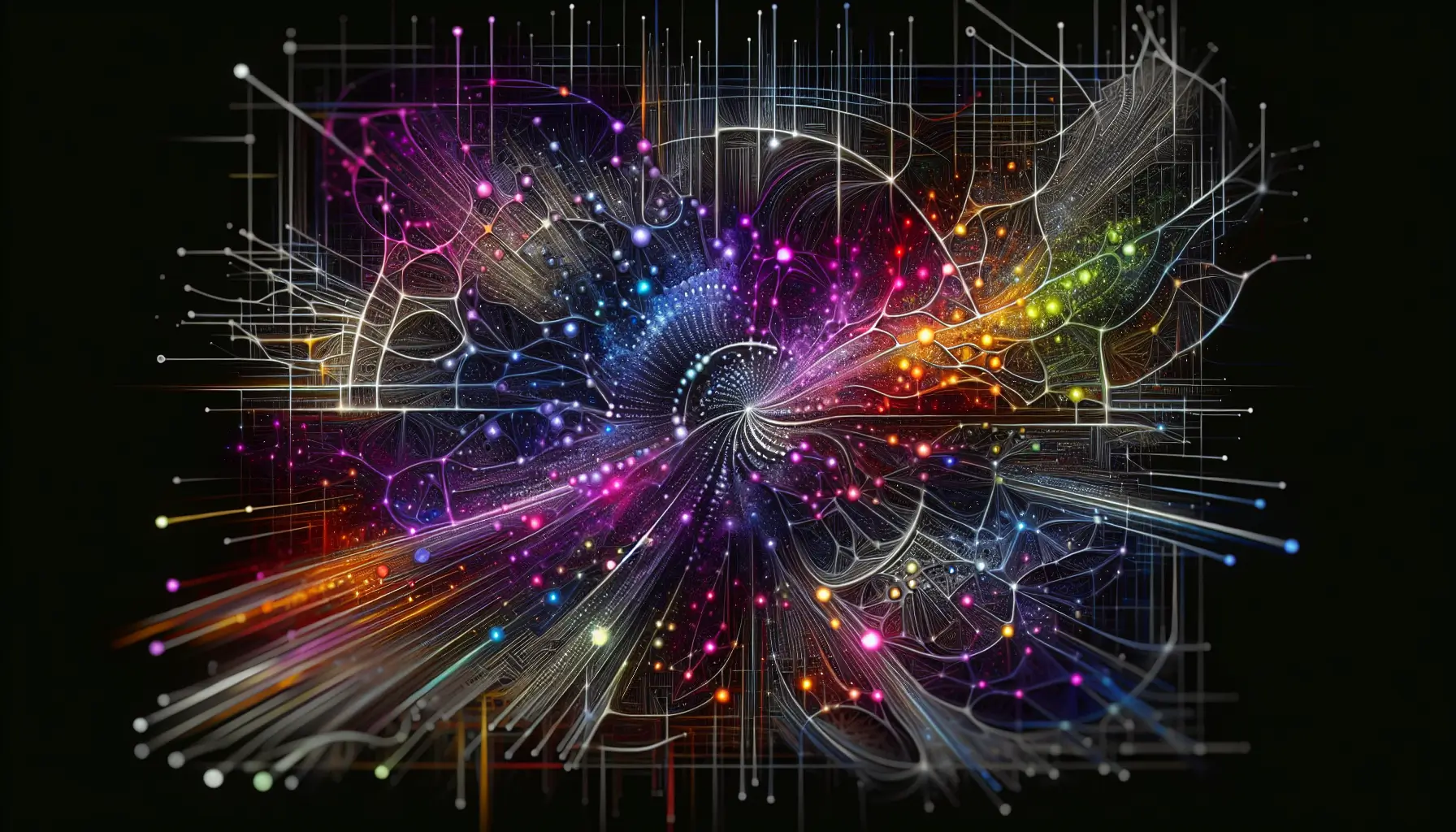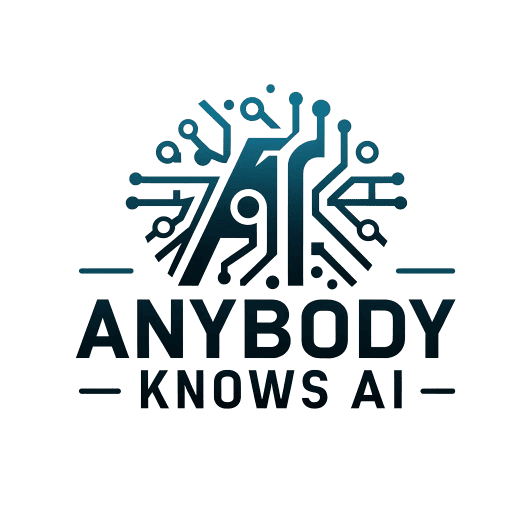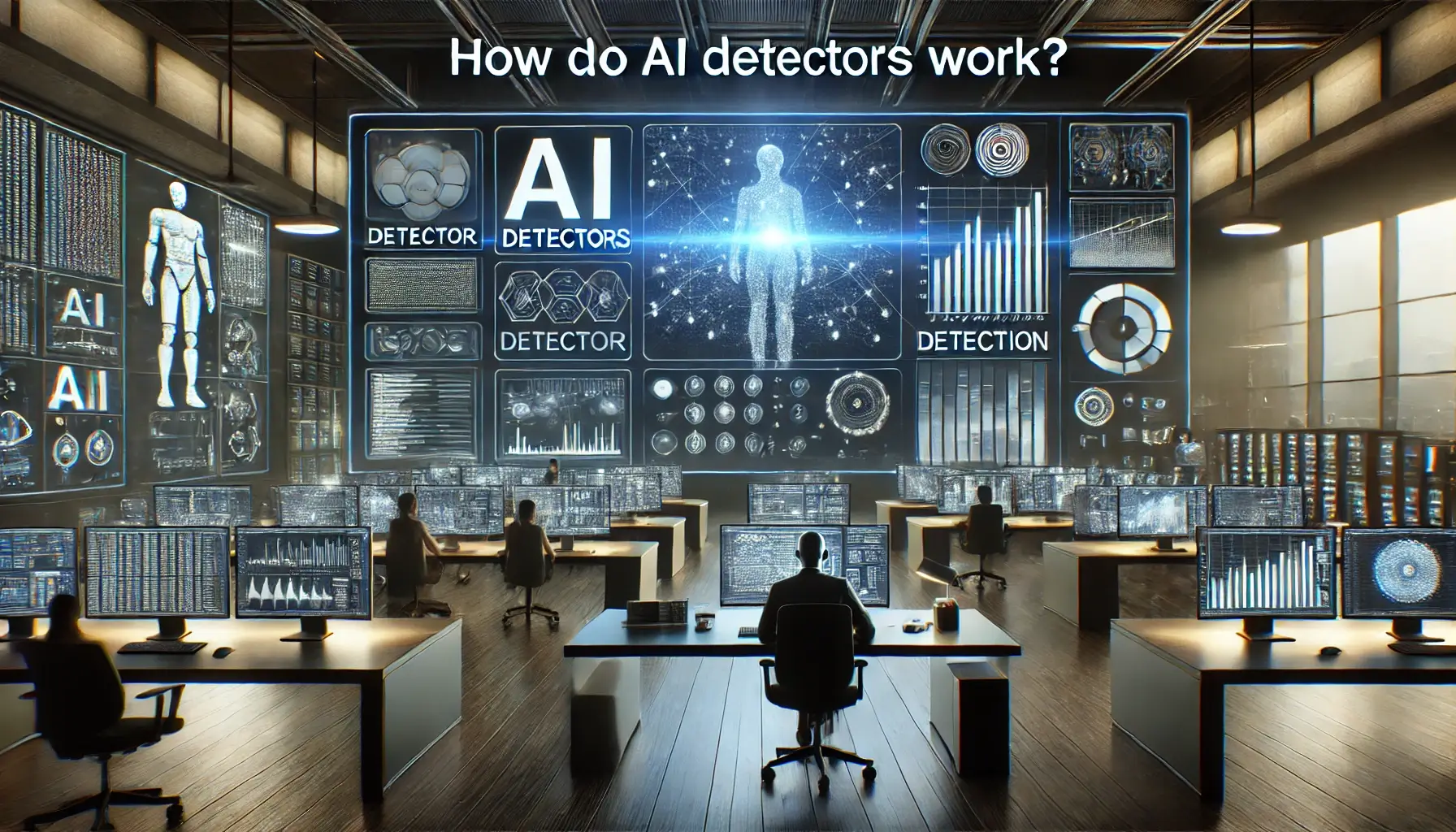Have you ever wondered how do AI detectors work to pinpoint AI-generated content? The key lies in pattern recognition in the dueling realms of AI creators and detectors. AI detectors harness machine learning algorithms to discern subtle linguistic cues that suggest non-human authorship.
This concise guide takes you behind the scenes of AI detection technology, revealing the inner mechanics without overwhelming you with complex jargon or preempting the finer details that follow.
Key Takeaways
- AI detectors leverage machine learning and natural language processing to spot differences between human and AI-generated text by analyzing patterns, perplexity, burstiness, and semantic meaning.
- These detectors operate on probabilities and require continuous updates and diverse training data to identify AI content accurately, presenting challenges like false positives and negatives.
- As AI writing tools become more sophisticated, AI detectors must evolve through innovation and collaboration to preserve the integrity of academic, professional, and online content.
Unveiling AI Detectors: Understanding the Basics

At their core, AI detectors are the sentinels of the written word, charged with identifying whether a piece of text is the product of human intellect or the output of an artificial intelligence system.
Employing a blend of machine learning, computational linguistics, and natural language processing, these detectors are pivotal in applications that rely on large language models for content creation. What is the underlying mechanism behind the functioning of AI content detectors?
Their effectiveness is rooted in their capacity to decipher patterns and intricacies within language, drawing on perplexity and burstiness as key indicators. Perplexity measures the predictability of the text, while burstiness reflects the variability in sentence complexity—traits that typically differ between human and AI-generated content.
Human writing is often variable and unpredictable, whereas AI tends to produce text with low perplexity and consistent burstiness, making this distinction the cornerstone of AI text detection.
The Inner Workings of AI Detection Tools

A closer look at AI detection tools unveils a sophisticated framework animated by intricate algorithms that thoroughly analyze language. These tools are the marriage of natural language processing techniques and machine learning algorithms, enabling them to navigate the vast seas of linguistic features that differentiate humans from AI-generated text.
To truly grasp the abilities of these tools, we need to delve into the details of their analytical prowess.
Parsing Syntax and Structure
The capacity to parse syntax and structure is a key component in the arsenal of AI detectors. AI content detectors dissect sentences to examine grammatical patterns, probing for the subtle nuances that could expose AI’s involvement.
These syntactic parsers delve into the relationships between words, their arrangement around subjects and verbs, and the frequency of parts of speech to discern the intricacies of sentence structure. It’s a delicate dance of analysis, seeking to uncover the uniformity that often betrays text generated by an AI.
Semantic Analysis: Beyond Words
AI detectors venture beyond mere structure, navigating into the profound territory of semantic meaning. Here, words are not just strings of letters but vectors in multidimensional space, representing rich, contextual meanings that humans intuitively understand. By transforming text into these vector spaces, AI content detectors tap into a realm where human and AI-generated content reveal their true colors.
Machine learning models get trained to interpret these vectors using natural language processing techniques, distinguishing the human propensity for creative language choices from the more formulaic approach of AI language models.
Pattern Recognition and Anomalies
Detecting AI-generated text goes beyond the written words to how they are assembled. AI detectors analyze burstiness—the variation in sentence length and complexity—and look for anomalies that could indicate the presence of AI. Human writing is dynamic and diverse, while AI-generated text can exhibit a low variance in structure and tempo.
However, Detecting AI writing manually can be challenging due to the increasing sophistication of AI-generated content. In this context, human-written text stands out for its unique characteristics and nuances.
Overusing or underusing specific words or phrases can be telltale signs, prompting AI detectors to flag these as potential AI creations.
Measuring the Effectiveness of AI Content Detectors

Many factors come into play when assessing the effectiveness of AI content detectors. Accuracy, interpretability, and the quality of training data are just the tip of the iceberg. The probabilistic nature of AI detection means that these tools operate on likelihoods rather than certainties, which introduces the potential for both false positives and false negatives.
How, then, do we gauge the true effectiveness of these digital detectives and understand how AI detectors work?
One approach could be evaluating their performance across diverse language models and use cases. AI content detection tools, also known as AI detectors, are not infallible—they require continuous updates to keep up with the ever-evolving landscape of AI-generated content. The quality and diversity of the training data they consume directly impact their ability to make accurate distinctions.
For settings like academia, where misjudgment is high, these tools are often paired with plagiarism checkers, demanding a careful and informed interpretation of their findings. One such AI detection tool is crucial to maintaining the integrity of academic work.
The Battle of AI: Generators vs. Detectors

The domain of AI writing resembles an arms race, where generators and detectors are forever vying for supremacy. As AI writing tools become more adept at mimicking human styles and evading detection, AI detectors must rise to the challenge, adapting and refining their methodologies to keep pace.
The accuracy of these detectors can fluctuate, with some achieving impressive detection rates under specific conditions. Still, the question remains: can they consistently keep up with the cunning of their counterparts, especially when faced with an advanced AI writing tool? In this context, AI writing tools tend to evolve rapidly, making the task of AI detectors even more challenging.
This ever-evolving cat-and-mouse dynamic persists, with each side enhancing its capabilities. As AI writing tools evolve, so must the AI detectors evolve, finding new ways to parse the ever-more sophisticated outputs of AI generators. It’s a battle of wits, where the prize is the integrity of our digital content landscape.
Ethical Implications and Misuse Prevention
The use of AI detectors comes with its own set of ethical dilemmas. Biases inherent in these systems can lead to the misclassification of text, especially from those who are not native English speakers, raising concerns about fairness and the risk of unwarranted accusations. Content integrity is paramount in academia and scientific publishing, prompting strict editorial policies to prevent AI-generated content from entering the scholarly record.
The stakes of failing to identify AI-generated content are high. From damaging academic careers to eroding public trust, the consequences are far-reaching. Ensuring the authenticity of online information and maintaining academic integrity both crucially depend on accurate AI content detection, which is vital in the fight against misinformation.
As we navigate this ethical landscape, the importance of ongoing assessment and reflection on the implications of AI content detection cannot be overstated.
Strategies for Evading AI Detection

As AI detectors become more effective, strategies to evade scrutiny also evolve. Paraphrasing tools, for instance, can shroud AI-generated content in a veil of obscurity, making it more difficult for detectors to pinpoint their origins. Adjusting terminology, sentence structure, and punctuation can further camouflage the digital fingerprints of machine-generated text.
Those seeking to slip past AI detectors have even resorted to human intervention. One can craft a piece that engages readers and evades detection by refining AI-generated content with a human touch—adding personal insights, anecdotes, and a consistent tone.
This hybrid approach, written by a human, leverages the best of both worlds, merging the efficiency of AI with the nuanced expertise of human writers.
AI Detection in the Professional Sphere
AI detectors act as guardians of authenticity in professional environments. Academia relies on these tools, including the AI detector, to verify the originality of scholarly work, ensuring that the pillars of academic integrity stand firm.
Media and journalism organizations, too, turn to AI detection and the use of an AI tool to authenticate content and combat the proliferation of deepfakes, upholding the trustworthiness of their reporting.
AI content detectors are indispensable for businesses in vetting outsourced content, safeguarding online reputation, and maintaining favorable search engine rankings. The reliability of information is not just a matter of principle but also a strategic asset across various domains, including law and SEO, where AI detectors play a crucial role.
AI Detectors and SEO: A Symbiotic Relationship
Within the intricate world of search engine optimization, AI detectors and AI-generated content maintain a delicate balance. SEO professionals rely on content detection tools, such as AI detectors, to sidestep potential penalties from search engines, which may frown upon using AI-generated content.
Conversely, they also wield AI tools like Surfer SEO to craft content that not only ranks well but also evades detection, illustrating the nuanced interplay between creation and detection.
This symbiotic relationship is a testament to the adaptability of SEO strategies in the face of emerging technologies. AI detectors are undoubtedly helpful in preserving the integrity of content. Still, they also challenge creators to innovate, ensuring that their content is optimized and indistinguishable from human-crafted work.
Limitations and Challenges Facing AI Detection
Despite their progress, AI detectors have their limitations. False positives can tarnish the work of legitimate creators, while sophisticated AI-generated content can slip through undetected. The case of Plus text highlights the limitations of current detection methods in accurately identifying AI-generated content, underscoring the need for continual refinement.
Such challenges are compounded by the ever-increasing sophistication of AI-generated images, which can elude detection when altered or manipulated beyond the scope of the AI detectors’ training data.
To remain effective, these tools must constantly evolve, their algorithms fine-tuned, and their data repositories enriched to keep up with the cutting-edge AI writing tools. As we acknowledge these limitations, it’s crucial to approach AI detection with skepticism and informed caution, recognizing the tools’ evolving nature and potential inaccuracies.
The Future Landscape of AI Detection Technology
Collaboration and innovation will shape the future of AI detection technology. By integrating human expertise and user feedback into the detection process, AI detectors can close the gap between human and AI-generated material, improving accuracy. The path forward will likely involve the development of more sophisticated algorithms and including richer, more diverse training data.
As AI continues to permeate various facets of media and content creation, the role of AI detectors will become increasingly pivotal. They must:
- Adapt to new types of synthetic media
- Evolve alongside them
- Ensure that the boundary between human creativity and artificial intelligence remains discernible.
Summary
In the intricate ballet of bits and bytes, AI detectors play a critical role in distinguishing the progeny of human intellect from the creations of artificial intelligence. From parsing syntax to semantic analysis and measuring effectiveness to confronting ethical dilemmas, we’ve explored the multifaceted nature of these digital sleuths.
As we stand on the cusp of AI’s ever-expanding capabilities, it’s clear that the future of AI detection is one of constant adaptation, requiring a blend of technology and human insight to navigate the nuanced digital landscape.
| Aspect | Details |
|---|---|
| Primary Metrics | Perplexity: Measures text predictability; lower values suggest AI generation. |
| Burstiness: Assesses variation in sentence structure and length; lower values suggest AI generation. | |
| Technological Backbone | Utilizes machine learning models and NLP techniques to analyze text patterns and structures. |
| Combines statistical analysis with semantic coherence and lexical features to detect AI text. | |
| Popular Tools | Turnitin Authorship Investigate: Analyzes writing style and metadata to verify authorship. |
| Grammarly’s AI Detector: Checks sentence structure, phrasing, and consistency for AI signs. | |
| Copyleaks AI Content Detector: Focuses on linguistic patterns and writing styles. | |
| GPTZero: Detects complexity and predictability to identify AI-generated text. | |
| Originality.ai: Detects AI-generated text and plagiarism; useful for SEO and content marketing. | |
| Applications | Education: Detects AI-generated assignments to ensure academic integrity. |
| Online Content: Identifies AI-generated spam and fake reviews on platforms. | |
| News and Media: Ensure reliability by detecting AI-generated misinformation. | |
| Cybersecurity: Detects AI-generated malware and phishing attempts. | |
| Challenges | Reliability varies; high accuracy (up to 84%) but not infallible. |
| Continuous updates are required to match evolving AI capabilities. |
This table encapsulates the essential elements of AI detectors, their functionality, and their practical use cases across different sectors.
Frequently Asked Questions
What exactly do AI detectors look for in text to determine if it’s AI-generated?
AI detectors analyze linguistic features such as perplexity, burstiness, sentence structure, and semantic meaning to identify patterns and anomalies that differ from human writing. Uniform sentence lengths and predictable word usage are some factors they look for.
Can AI detectors always accurately identify AI-generated content?
AI detectors are not always accurate in identifying AI-generated content. They can face challenges such as false positives and negatives, requiring continuous updating to keep up with evolving AI writing tools.
How do AI detectors affect SEO and content creation?
AI detectors can help SEO professionals avoid penalties from search engines for using AI-generated content and create content that mimics human writing while maintaining optimization. This is essential for balancing the need for SEO with the desire for authentic, human-authored content.
Are there ethical concerns associated with using AI detectors?
Yes, ethical concerns are associated with using AI detectors, including potential biases and the implications of false accusations in academic and professional settings.
What does the future hold for AI detection technology?
The future of AI detection technology will likely involve integrating human expertise, user feedback, improved algorithms, and better training data to enhance accuracy and adapt to new synthetic media. It’s an exciting time for advancements in this field!







